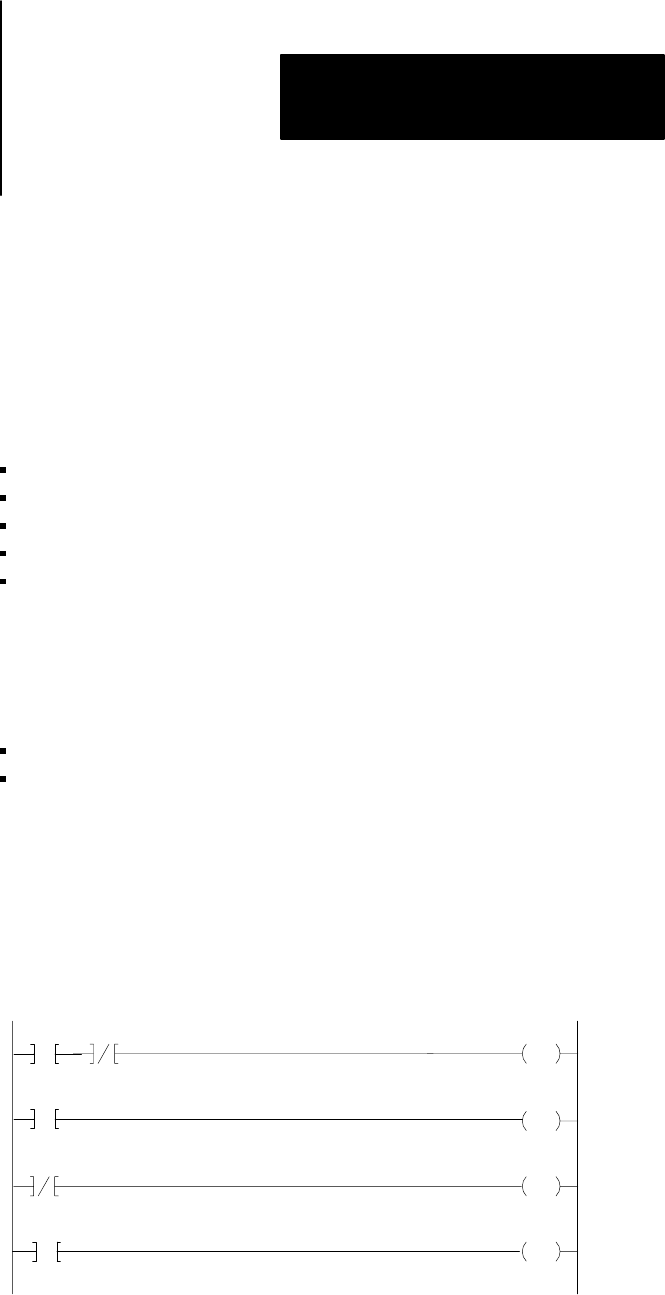User Manual Owner's manual
Table Of Contents
- 1772-6.5.8, Mini-PLC-2/02, -2/16, -2/17 Processor, User Manual
- Important User Information
- Summary of Changes
- Table of Contents
- 1 - Using This Manual
- 2 - Fundamentals of a Programmable Controller
- 3 - Hardware Features
- 4 - Installing Your Programmable Controller
- 5 - Starting Your Processor
- 6 - Maintaining and Troubleshooting Your Processor
- 7 - Memory Organization
- 8 - Scan Theory
- 9 - Relay-Like Instructions
- 10 - Program Control Instructions
- 11 - Timers and Counters
- 12 - Data Manipulation and Compare Instructions
- 13 - Three-Digit Math Instructions
- 14 - EAF Math Instructions
- 15 - EAF Log, Trig, and FIFO Instructions
- 16 - EAF Process Control Instructions
- 17 - Jump Instructions and Subroutines
- 18 - Block Transfer
- 19 - Data Transfer Instructions
- 20 - Bit Shift Registers
- 21 - Sequencers
- 22 - Selectable Timer Interrupts
- 23 - Report Generation
- 24 - Program Editing
- 25 - Programming Techniques
- 26 - Program Troubleshooting
- A - Specifications
- B - Processor Comparison Chart
- C - Number Systems
- D - Glossary
- E - Quick Reference
- Index
- Back Cover

Chapter
25
25-1
Programming Techniques
This chapter describes several programming techniques:
one-shot programming
re-start
cascading timers
temperature conversions
program control
The one-shot programming technique sets a bit for one program scan only.
There are two types of one-shots:
leading edge
trailing edge
Leading Edge One Shot
A leading edge one-shot sets a bit for one scan when its input condition has
made a false-to-true transition. The false-to-true transition represents the
leading edge of the input pulse (Figure 25.1).
Figure 25.1
Leading
Edge One Shot
112
04
011
14
253
00
253
00
112
04
253
00
L
011
14
U
011
14
010
00
Chapter Objectives
OneShot Programming










